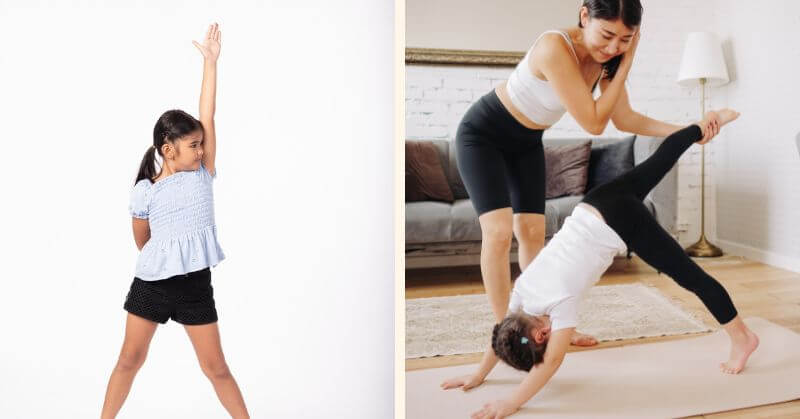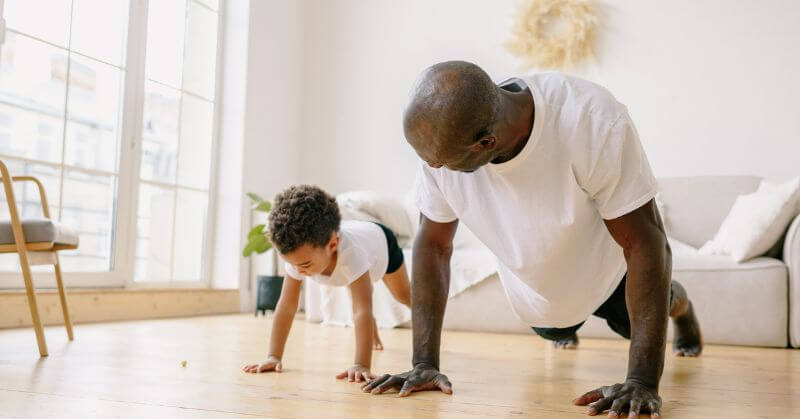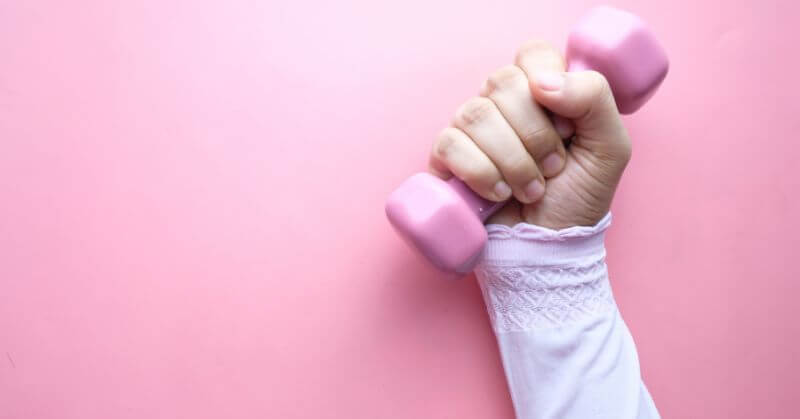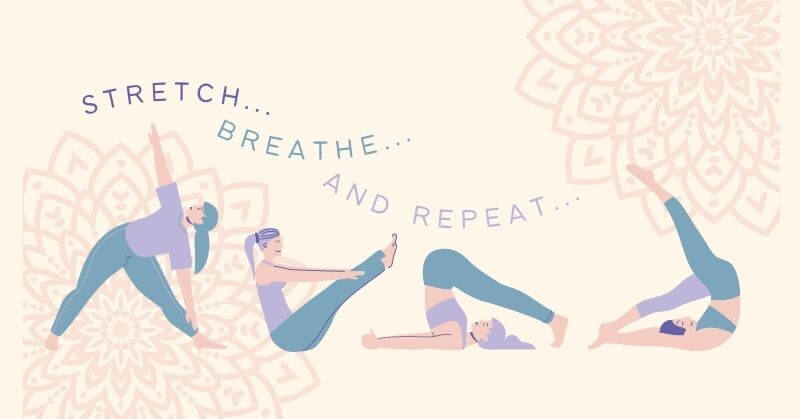Are you thinking about Pilates for kids? In today’s fast-paced world, children are often faced with numerous distractions and sedentary lifestyles that can impact their physical and mental health. As parents and caregivers, it’s crucial to prioritize the well-being of our children and provide them with opportunities to engage in physical activities that promote healthy development.
One such activity gaining popularity is Pilates for Kids, a holistic exercise program that focuses on improving flexibility, strength, posture, and mindfulness in young ones. In this article, we will explore the benefits of Pilates for kids, the principles behind this form of exercise, and how it can positively impact children’s overall well-being.
Basics Of Pilates
Pilates is a form of exercise developed by Joseph Pilates in the early 20th century, primarily focused on strengthening the core muscles, improving posture, and enhancing flexibility. Pilates exercises are performed on a mat or using specialized equipment, such as the Reformer, Cadillac, or Wunda Chair.
In recent years, Pilates has gained popularity among adults as a highly effective exercise for improving physical fitness and promoting mental well-being. However, this form of exercise can also be adapted to suit the needs of children and offer them numerous benefits for their physical and mental health.
Principles of Pilates for Kids: Mindful Movement and Body Awareness
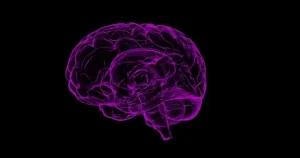
One of the core principles of Pilates for kids is mindful movement, which emphasizes the importance of being present in the moment and fully aware of one’s body and movements. Unlike traditional forms of exercise that focus solely on physical strength and endurance, Pilates encourages children to pay attention to their bodies and movements, fostering body awareness and mindfulness. This principle promotes a deeper connection between the mind and body, helping children develop better control, coordination, and balance, which are crucial skills for their overall physical development.
Benefits of Pilates for Kids: Physical Health
Regular practice of Pilates for kids can bring about several physical health benefits. Some of the significant advantages of Pilates for kids include:
- Improved Flexibility: Pilates exercises involve stretching and lengthening of muscles, which can help children develop better flexibility and range of motion. This can be particularly beneficial for children who engage in sports or physical activities that require flexibility, such as gymnastics or dance.
- Enhanced Strength: Pilates exercises focus on strengthening the core muscles, including the abdominal, back, and pelvic muscles. A strong core can improve overall stability, posture, and balance, which are essential for children’s physical development.
- Better Posture: Pilates emphasizes proper alignment and body awareness, which can help children develop good posture habits from an early age. This can be particularly beneficial for children who spend long hours sitting or using electronic devices, which can impact their posture negatively.
- Increased Body Awareness: Pilates encourages children to pay attention to their bodies and movements, fostering a deeper sense of body awareness. This can help children develop better motor skills, coordination, and spatial awareness, which are crucial for their overall physical development.
Benefits of Pilates for Kids: Mental Health
In addition to the physical health benefits, Pilates for kids can also positively impact their mental health. Some of the mental health benefits of Pilates for kids include:
- Reduced Stress: Pilates involves mindful movement and controlled breathing, which can help children relax, reduce stress, and release tension. This can be particularly beneficial for children who may face stressors such as academic pressure or social challenges.
- Improved Concentration: Pilates requires focus and concentration.
- Improved Cognitive Function: Pilates exercises require concentration, coordination, and memory, which can help improve cognitive function in children. Regular practice of Pilates can enhance their ability to focus, think critically, and problem-solve, promoting cognitive development.
- Better Sleep: Pilates can also help children improve their sleep quality. The relaxation techniques and mindful breathing practiced in Pilates can help children calm their minds and bodies, promoting better sleep hygiene and overall restful sleep.
- Enhanced Body Confidence: Pilates encourages children to develop a positive relationship with their bodies by promoting body awareness, acceptance, and self-care. This can help children develop a healthy body image and boost their self-esteem, promoting positive mental well-being. Increased Mindfulness: Pilates emphasizes mindful movement, which encourages children to be present at the moment and fully aware of their body and breath. This can help children develop mindfulness skills that can be applied to other aspects of their lives, promoting better emotional regulation and stress management.
How to Get Started with Pilates?
If you’re interested in introducing Pilates to your child, here are some tips to get started:
- Find a Certified Pilates Instructor: Look for a certified Pilates instructor who specializes in working with children. It’s important to ensure that your child receives proper guidance and instruction tailored to their age and developmental stage.
- Start with Basic Exercises: Begin with basic Pilates exercises that are appropriate for your child’s age and fitness level. Avoid pushing your child too hard and encourage them to progress at their own pace.
- Make it Fun: Incorporate playful and creative elements into Pilates sessions to make them enjoyable for your child. Use props like balls, bands, or colorful mats to add excitement and engagement to the practice.
- Emphasize Mindfulness: Encourage your child to focus on their breath, body sensations, and movements during Pilates sessions. Help them develop body awareness and mindfulness skills by guiding them to be present in the moment.
- Create a Routine: Establish a regular Pilates routine for your child, incorporating it into their weekly schedule. Consistency is key to seeing the benefits of Pilates for kids.
- Practice Safety: Ensure that your child practices Pilates in a safe environment with proper equipment and supervision. Remind them to listen to their bodies and avoid any exercises that cause discomfort or pain.
Final Thoughts
Pilates for kids can be a valuable addition to children’s fitness routines, promoting physical and mental well-being. With its focus on mindful movement, body awareness, and a holistic approach to exercise. Pilates can help children develop flexibility, strength, posture, mindfulness, and body confidence.
By introducing Pilates to your child and incorporating it into their routine. You can provide them with a lifelong foundation for a healthy lifestyle. So, why not give Pilates for kids a try and witness the positive impact? It can have on your child’s overall well-being!
Pilates emphasizes mindful movement. It encourages children to be present at the moment and fully aware of their bodies and breath. This can help children develop mindfulness skills. It can be applied to other aspects of their lives. Promoting better emotional regulation and stress management.
Tinydale is on YouTube, Click here to subscribe for the latest videos and updates.
Follow Us: Facebook | Instagram | Twitter | Youtube | Pinterest

